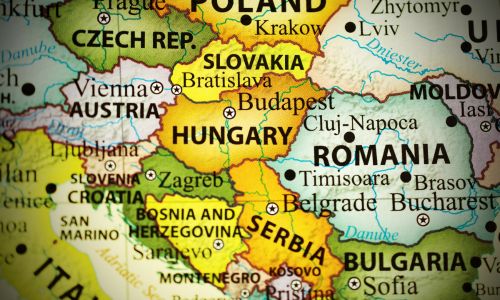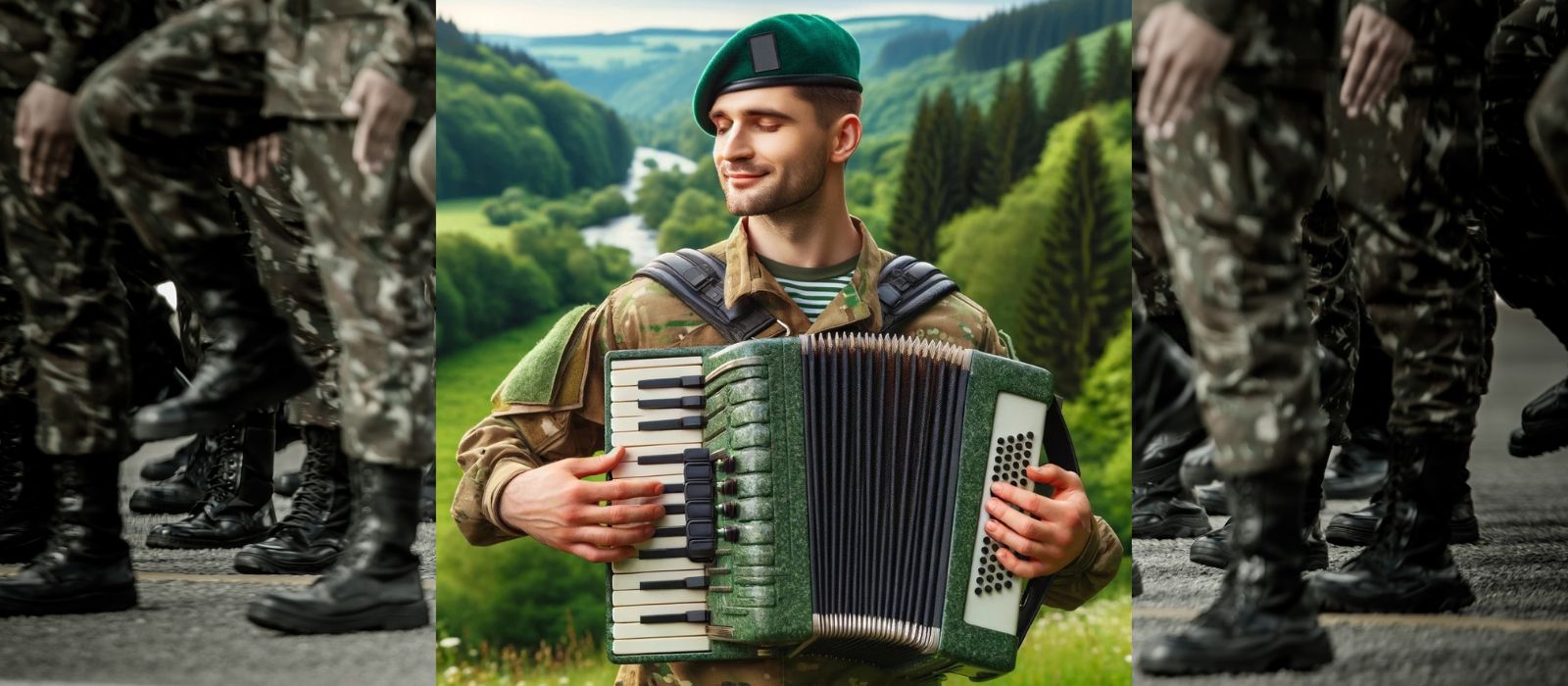Loyalty and affection for one’s homeland have always been valued. In the world of music, the accordion stands as a symbol of pride and cultural heritage.
This instrument has a rich history, playing a part in important historical moments and daily life, enabling the sharing of stories through its melodies.
Our study explores a tradition that embodies pride and respect across societies. From moving songs to melodies that unite communities, the accordion fosters a sense of patriotism.
Across Continents and Cultures
From the battlefields of Europe, to the mountain camps of armies in Latin America the accordion has stood as a companion, and an inspiring guide.
Its role in preserving heritage crossing boundaries and giving voice to not only soldiers on the front lines but also the civilians who are their moral support, cannot be overstated.
The diverse history of accordion music showcases its power to bring people together and ignite passion whether in times of celebration or during the march of defenders protecting their land. The time you catch the sound of an accordion playing.
Be it a national anthem or a poignant historical tune. Take a moment to grasp the narrative it weaves. It’s more than music; it’s a window, into a nations essence.
German Patriotic melodies
In Germany the accordion is more, than an instrument; it symbolizes the rich culture of the country reflecting its long history and vibrant traditions.
The tunes played on the accordion stir up feelings of pride each melody telling stories of Germany’s resilience and cultural diversity. These patriotic songs serve as a tribute to the nations roots.
For Germans the accordion holds importance bridging individuals to their homelands essence and enduring strength. The connection between the accordion, its patriotic melodies and the countrys customs strikes a chord with those who value this heritage.
Throughout Germanys past the accordion has been closely linked with the nation. With its origins in Germany it has been integral to folk music. Even accompanied soldiers, during World War II underscoring its presence in historical events.
Video courtesy of Accordeon Accordion Jo Brunenberg
Throughout its history Germany has produced numerous patriotic compositions.
Within every rendition of a song, on an accordion echoes a profound legacy—a sound and declaration that reflects the enduring patriotism of a nation proud of its history and people.
For individuals captivated by this tool and the narratives it conveys the accordion persists in echoing the tune of ones homeland carrying on through generations, with the essence of Germany.
Accordion music of Eastern Bloc countries

In the countries that were once part of the Eastern Bloc the accordion represents not the struggles faced under rule in the past but also the revival of national identity. In nations such, as Poland the accordion was banned during the period.
Its melodies found a way to be heard offering comfort and a secretive platform for expressing patriotism.
Today the accordion plays a role in European traditional music resonating with communal joy and human resilience.
Its contribution to popularizing dances like “mazurkas” and “obereks” in Poland or the “hora”, in Romania showcases how it brings people together and uplifts spirits, symbolizing the enduring bond woven into culture.
Patriotic Accordion melodies from former Yugoslavia

In the terrains of the Balkans the accordion holds a place, in the heart of various national and regional music genres. Serving as a symbol of liberty and unity this instrument plays a role in preserving the folklore and ancient warrior customs of this area.
It has been there alongside the soldiers during times of conflict in the Balkan Wars as in moments of celebration following victory during times of peace.
No Balkan festivity is truly complete without the tunes resonating from an accordion symbolizing the nature of its people. Like how memories of war are intertwined with the tunes produced by this instrument so too are dreams for a harmonious and prosperous future, for both the Balkans and its diverse nations.
Patriotic accordion tunes from People’s Republic of China

Many experts in music history believe that the modern accordion has its roots in the Sheng, a musical instrument.
Although there is some discussion about its lineage, it is commonly accepted that the accordion became part of culture around the 18th century through the efforts of Joseph Marie Amiot, a Jesuit missionary.
In the stretches of the wilderness in China, the soothing melodies of accordions used to fill the air, drifting from farming fields to remote production teams in the far northwest.
While this musical instrument has lost some of its popularity over the years, its nostalgic charm remains deeply ingrained in the memories of a generation.
In 1966, during the onset of the Cultural Revolution, the Tianjin People’s Fine Arts Publishing House released 80,000 pieces of propaganda art.
One notable poster, titled “Long Live the Victory of Chairman Mao’s Revolutionary Line of Literature and Art,” depicted an energetic scene where a youthful accordion player performed a lively melody.
This image was set against the backdrop of enthusiastic Red Guards, who, armed with red books and shovels towered over a subdued figure labeled as a counterrevolutionary. All the while, a serene portrait of Chairman Mao loomed overhead, overseeing the scene.
This period marked the zenith of the accordion’s acclaim in China, illustrating its role in the cultural and political narrative of the time. In 1949, when the People’s Republic of China was established, a special policy was put in place to ensure that accordion players were fairly compensated for both teaching and performing.
This decision demonstrated the importance that the government attached to the instrument during that time. Fast forward to 1962, a significant moment occurred when military musicians came together to establish the Beijing Accordion Orchestra, marking a pivotal point in the instrument’s popularity in the country.
The accordion quickly gained traction throughout China, becoming a prominent instrument in the country’s music scene. This rise in interest led to the formation of associations, the hosting of large-scale concerts, and the organization of festivals solely dedicated to celebrating the accordion.
These efforts not only showcased the appeal of accordions but also nurtured a lively community of enthusiasts and professionals brought together by their love for this versatile musical tool.
Despite not being associated with their folklore music, the accordion has become integrated into the cultural expressions of minority groups such as the Mongols, Tibetans and Uyghurs. Their fusion with instruments like “yangqin,” “suona,” and “erhu” blends tradition, with innovation reflecting a spirit that characterizes contemporary China.
Patriotic Accordion Tunes from the Americas

The Americas, known for their mix of cultures have all embraced the accordion in ways that reflect their musical heritage. From the vallenato”, in Colombia to the samba” in Brazil the accordion showcases a variety of styles that mirror the continents rich cultural tapestry.
Accordion gatherings held in countries like the United States, Argentina and Canada highlight the popularity of this instrument bringing together musicians and fans to revel in their shared love for the accordion.
In New Orleans soulful “zydeco” and “cajun” bands keep the influence through captivating accordion solos while Argentina pays homage to its tango tradition, with the haunting melodies of the “bandoneón,” a unique type of button accordion.
Dino is a hobbyist accordionist who loves music, photography, architecture, design and a slew of other fun things. He decided to launch this blog due to an increasing popularity of the accordion. He learned how to play the accordion by ear as a child and then progressed on to keyboards and eventually a drum set. He grew up in the Balkans and now lives in California where he occasionally plays the accordion at birthday parties and NYE celebrations. He now shares his love for the accordion through this blog.





Leave a Reply